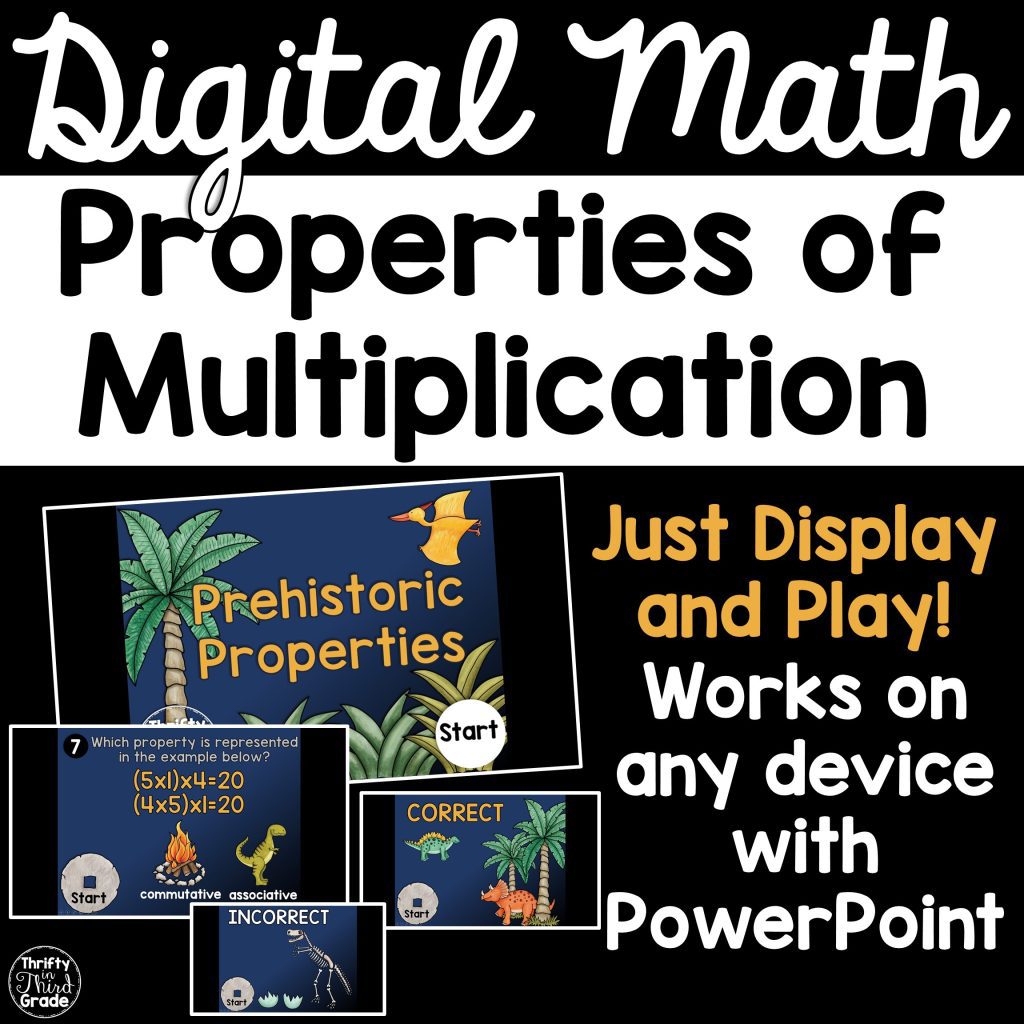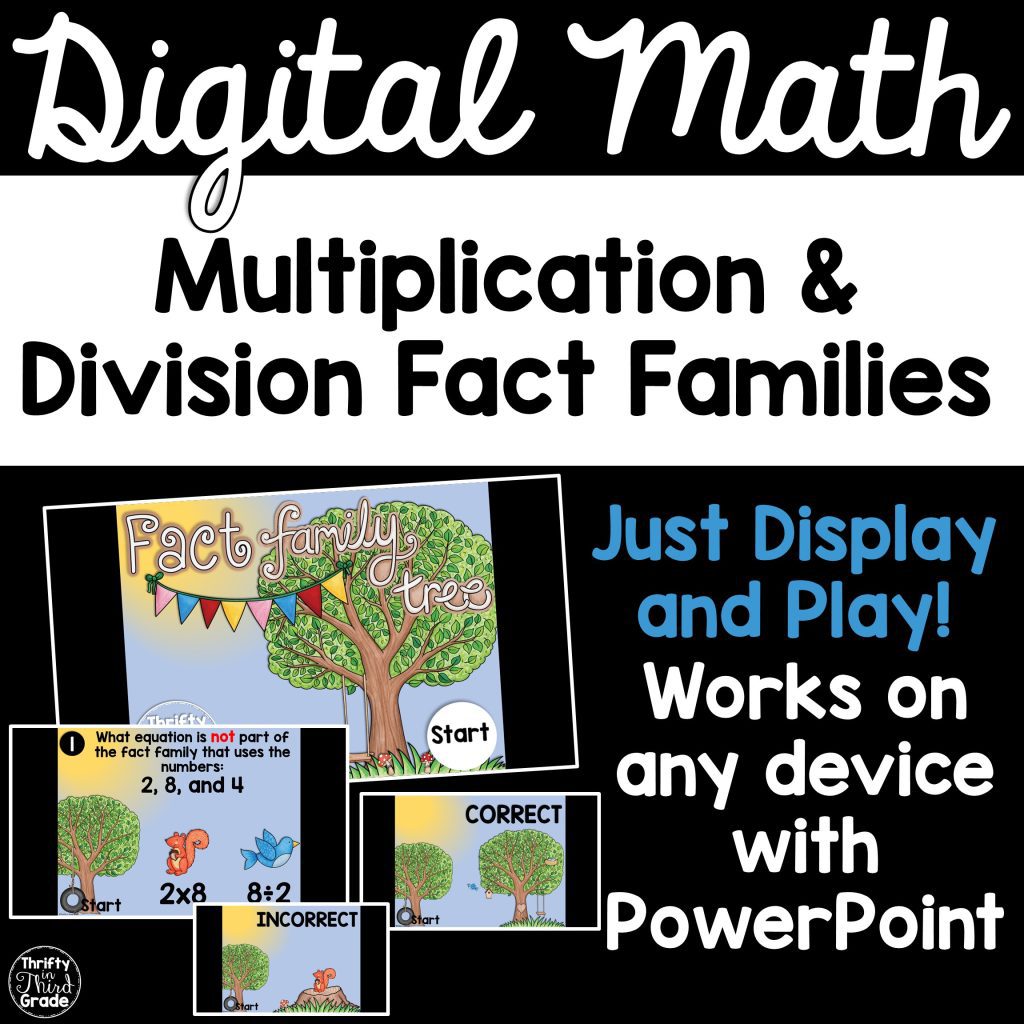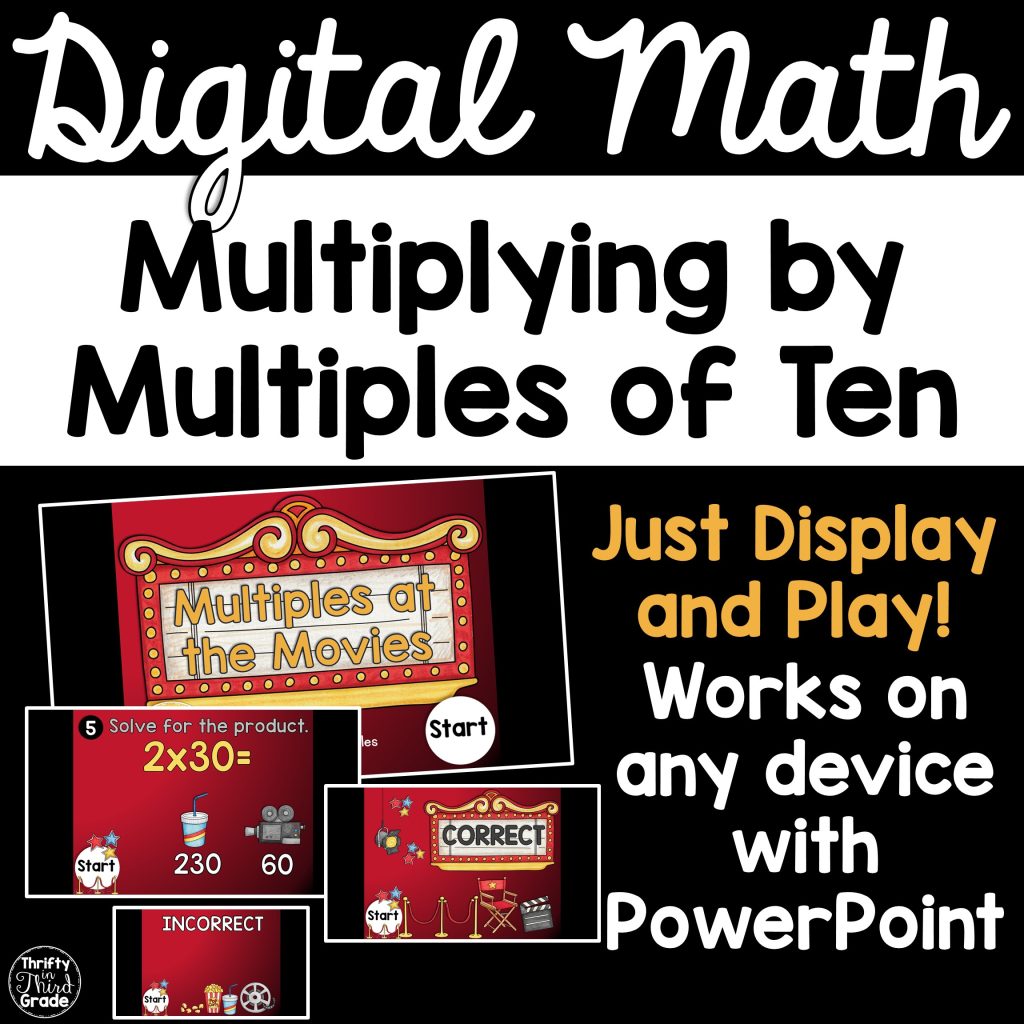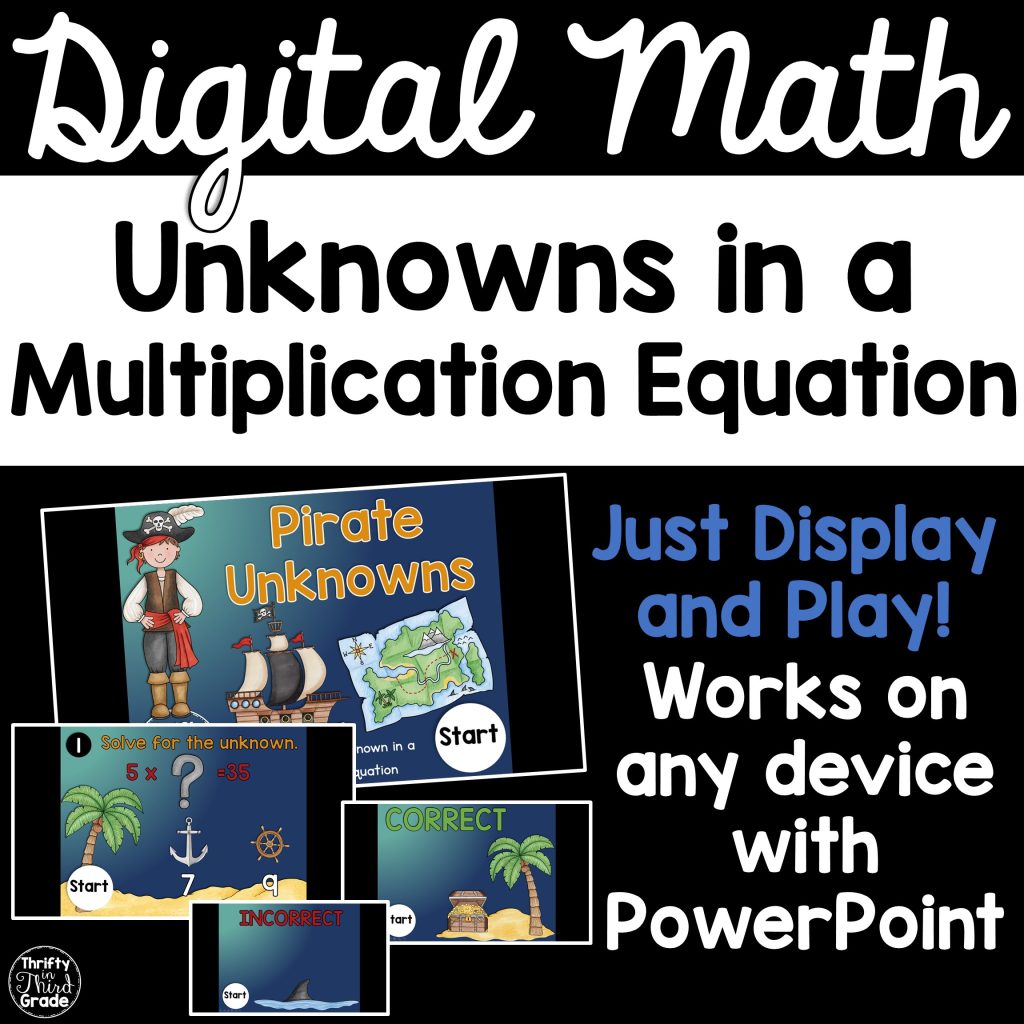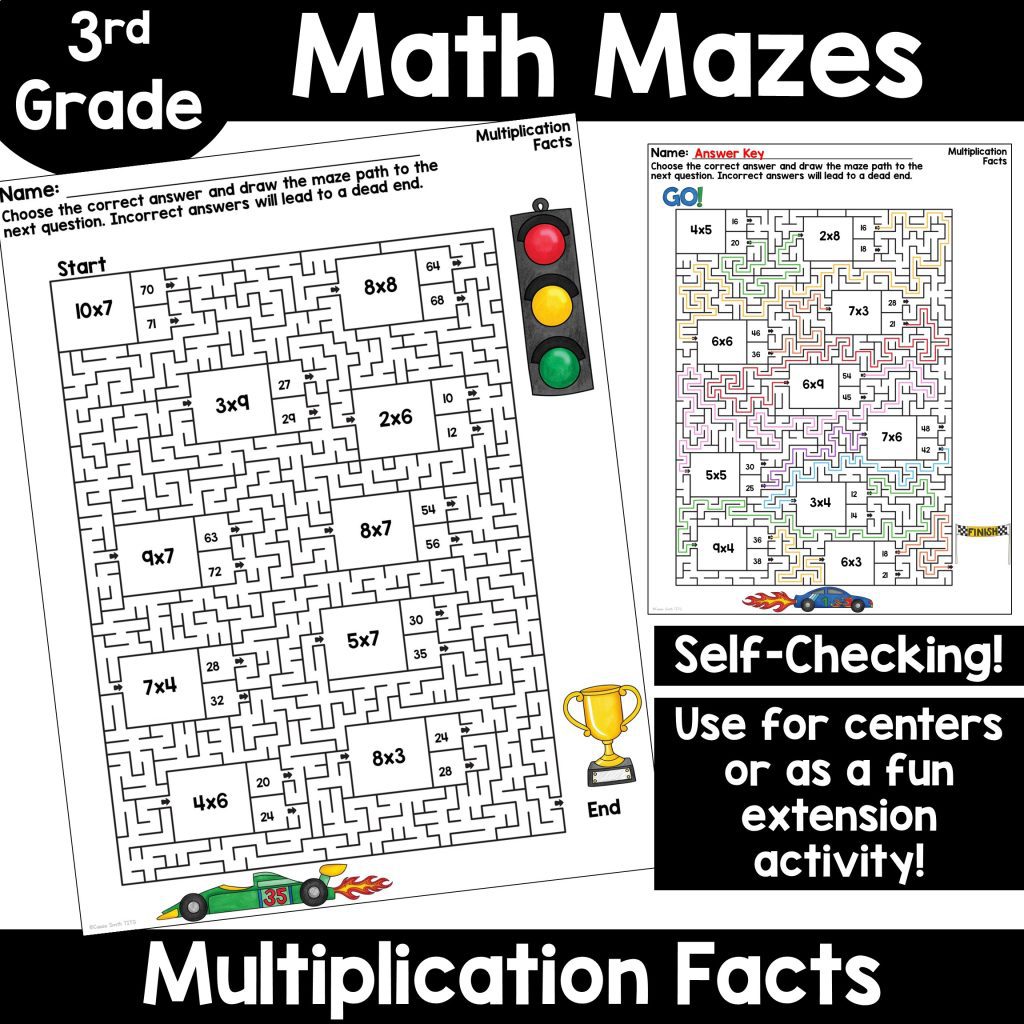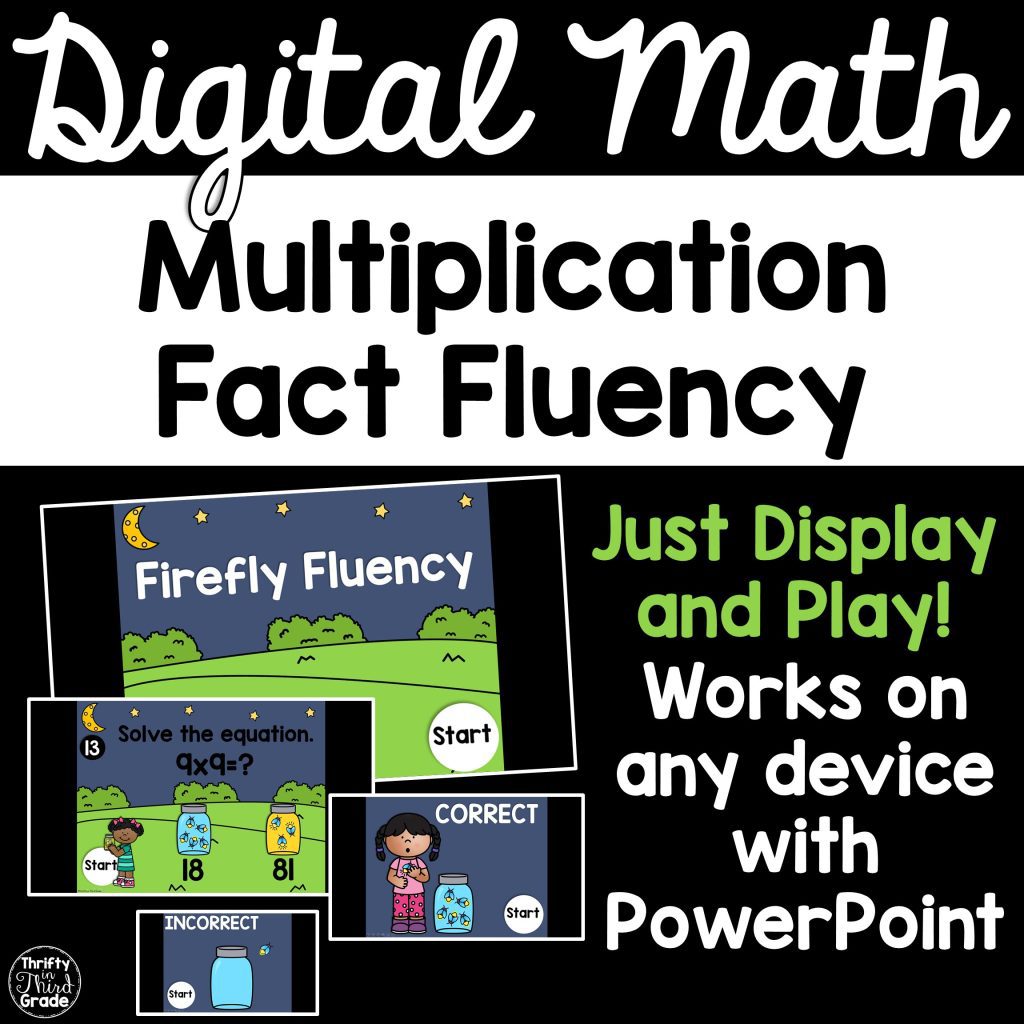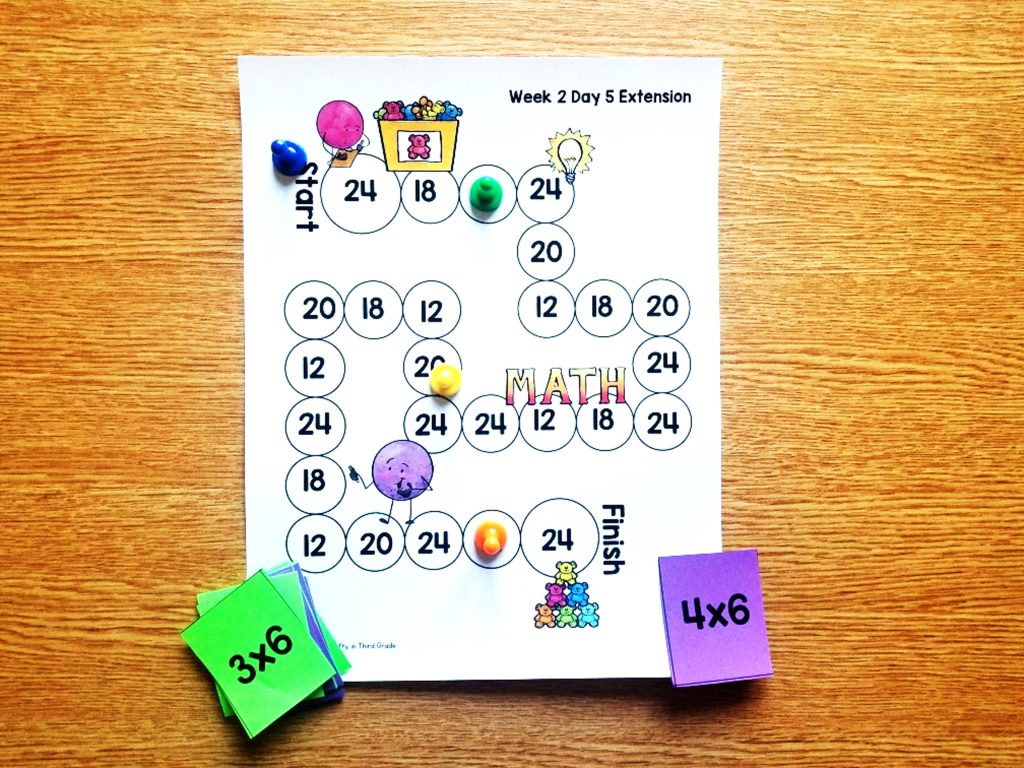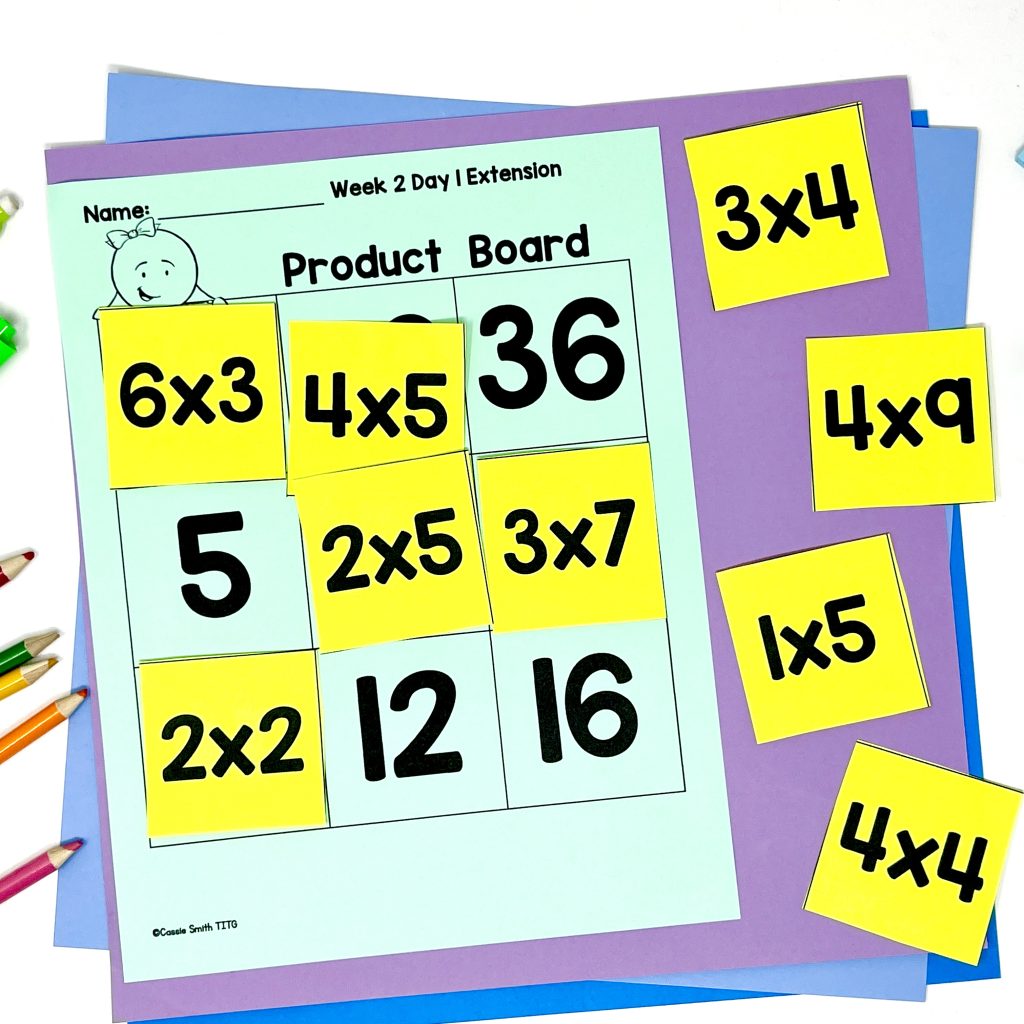Without a doubt, multiplication is hands-down the most important skill students will learn in third grade. That’s why it’s so important to have a variety of multiplication games that can make practicing multiplication facts fun!
After all, if the ultimate goal is to be fluent with multiplication facts, then your 3rd grade students are going to need a lot of practice!
Here are some of my favorite multiplication games for 3rd grade! I’ve broken down the list by topic so be sure to scroll through the whole post for ideas and games!👇

Games for Starting With Multiplication Basics: Arrays and Equal Groups
Arrays BINGO
As students are learning basic multiplication and what an equation represents array games are great practice. In this BINGO game students simply match the equation to the array it represents.
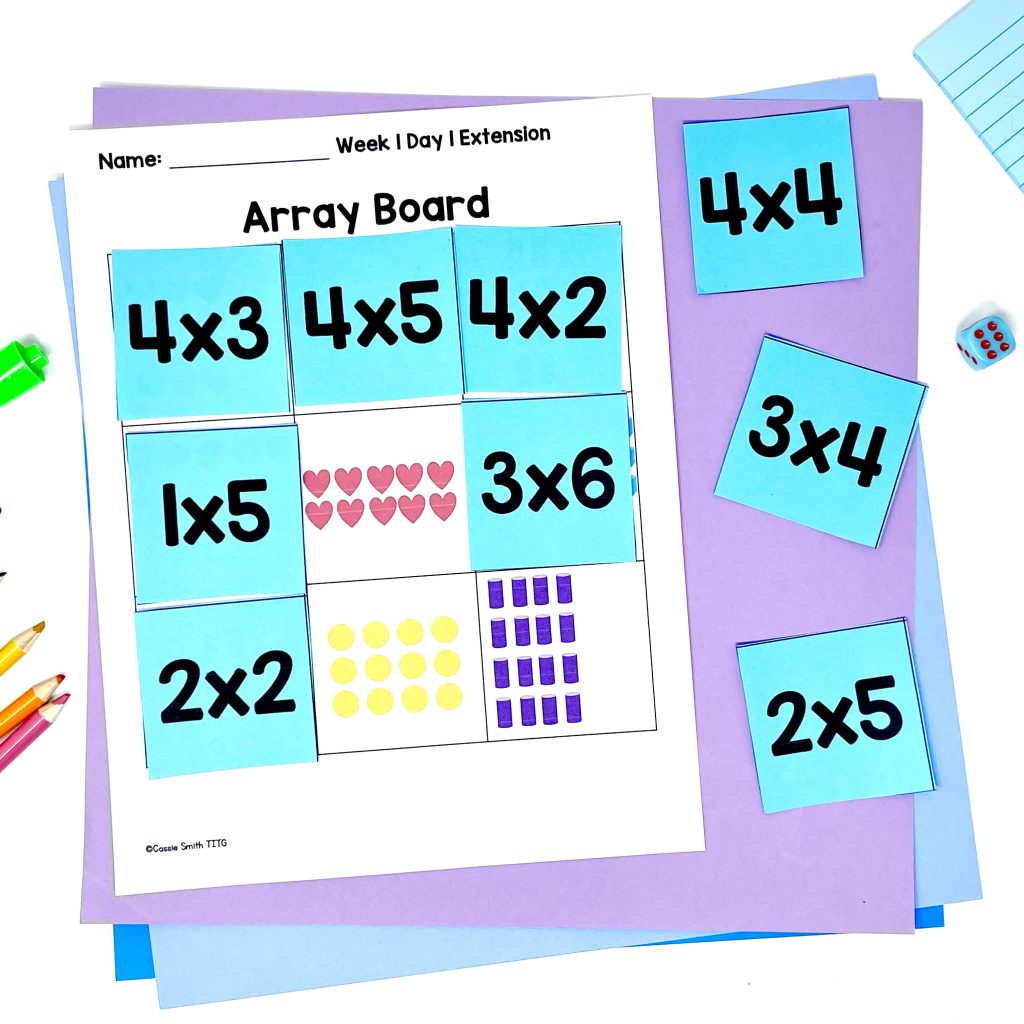
Multiplication Arrays Digital Math Game
This game focuses on teaching multiplication through arrays. It’s a great way to help students visualize multiplication problems and understand the concept of arrays.
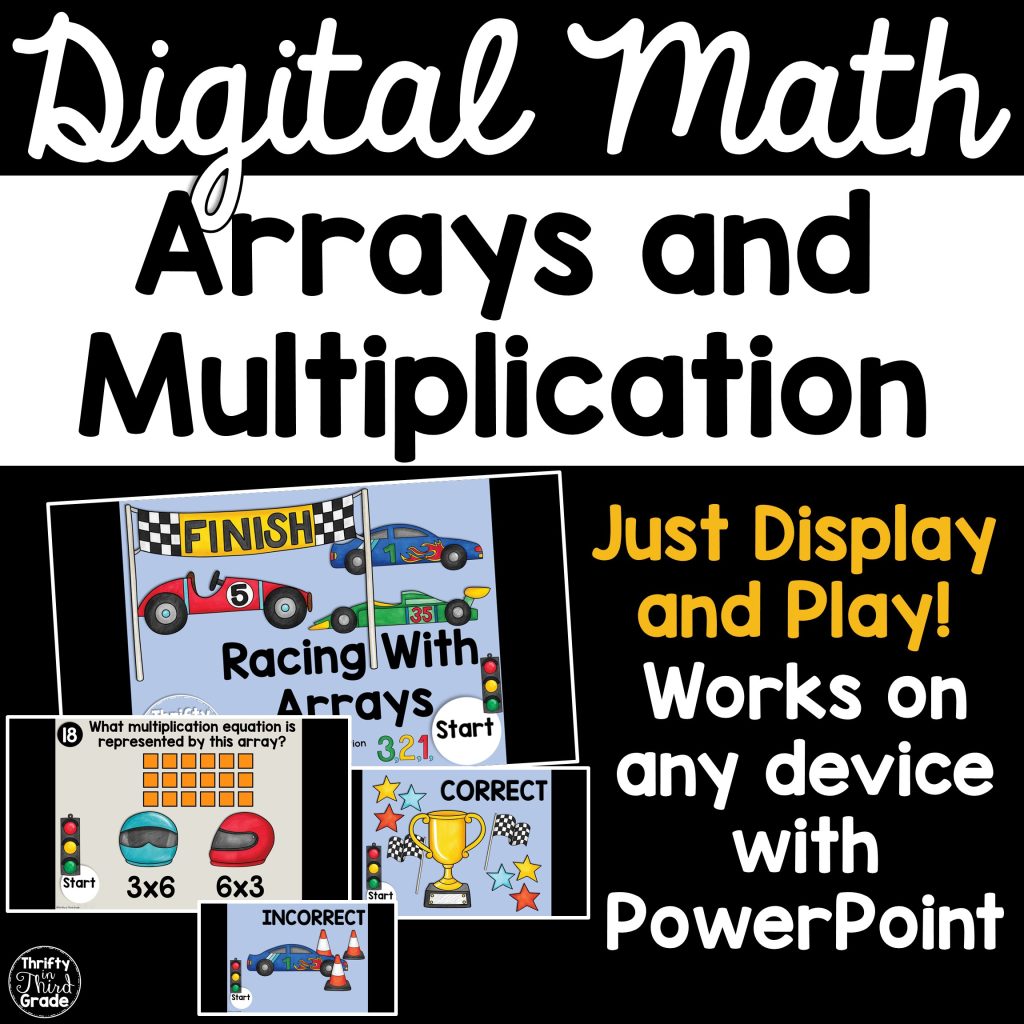
Games for Practicing the Properties of Multiplication and Fact Families
These digital games help students understand the relationship between multiplication and division through fact families and learning the properties of multiplication.
They are an interactive way to reinforce these concepts and the best part is that all these digital math games are self-checking. They immediately give students correct or incorrect feedback.
Commutative Property Relay
Divide students into teams and give each team a set of multiplication cards. Each card should have a multiplication problem, e.g., 3 x 4 and 4 x 3. The goal is for teams to match the pairs that demonstrate the commutative property. The first team to correctly match all pairs wins.
Associative Property Group Challenge
Write several multiplication problems that demonstrate the associative property on the board, such as (2 x 3) x 4 and 2 x (3 x 4). Give students manipulatives like counters or blocks to visually group and solve the problems. Have students discuss how changing the grouping does not change the product.
Distributive Property Puzzle 🧩
Create puzzle pieces with multiplication problems that can be solved using the distributive property. For example, 6 x 7 can be broken down into (6 x 5) + (6 x 2). Students work in pairs to match and solve the puzzles, demonstrating their understanding of the distributive property.
Fact Family House
Draw a simple house with three rooms on paper or a whiteboard. In each room, write the three numbers in a multiplication fact family, such as 2, 3, and 6. Students fill in the rooms with the correct multiplication and division equations, e.g., 2 x 3 = 6, 3 x 2 = 6, 6 ÷ 2 = 3, and 6 ÷ 3 = 2.
Fact Family Match
Create cards with individual numbers from fact families. Students work in pairs to match the numbers and write out the complete set of multiplication and division equations for each family. Do this on student white boards to save paper! This helps them see the relationship between the operations.
Fact Family Dice Game🎲
Provide students with dice labeled with numbers that fit within multiplication fact families. Students roll the dice and create fact families based on the numbers rolled. For example, if they roll a 4 and a 5, they write the fact family 4 x 5 = 20, 5 x 4 = 20, 20 ÷ 4 = 5, and 20 ÷ 5 = 4.
Games for Practicing Finding the Unknowns in Multiplication and Multiplying by Multiples of Ten
These two digital math games have fun themes and are great for practicing multiplying by multiples of ten and solving for the unknown factor in a multiplication equation.
Multiplication Escape Games🔐 (No Locks Needed!)
These multiplication escape activities are my FAVORITES because they are such a fun way for students to practice what they’ve learned.
Students will solve multiplication word problems and equations involving unknowns. Each game includes 26 task cards, a recording sheet, and a puzzle sheet.
Students will enjoy the challenge of finding the four-letter “code” by solving problems and filling out their recording sheets.
Since they don’t have a lot of steps, these escape games are PERFECT for students to do independently.
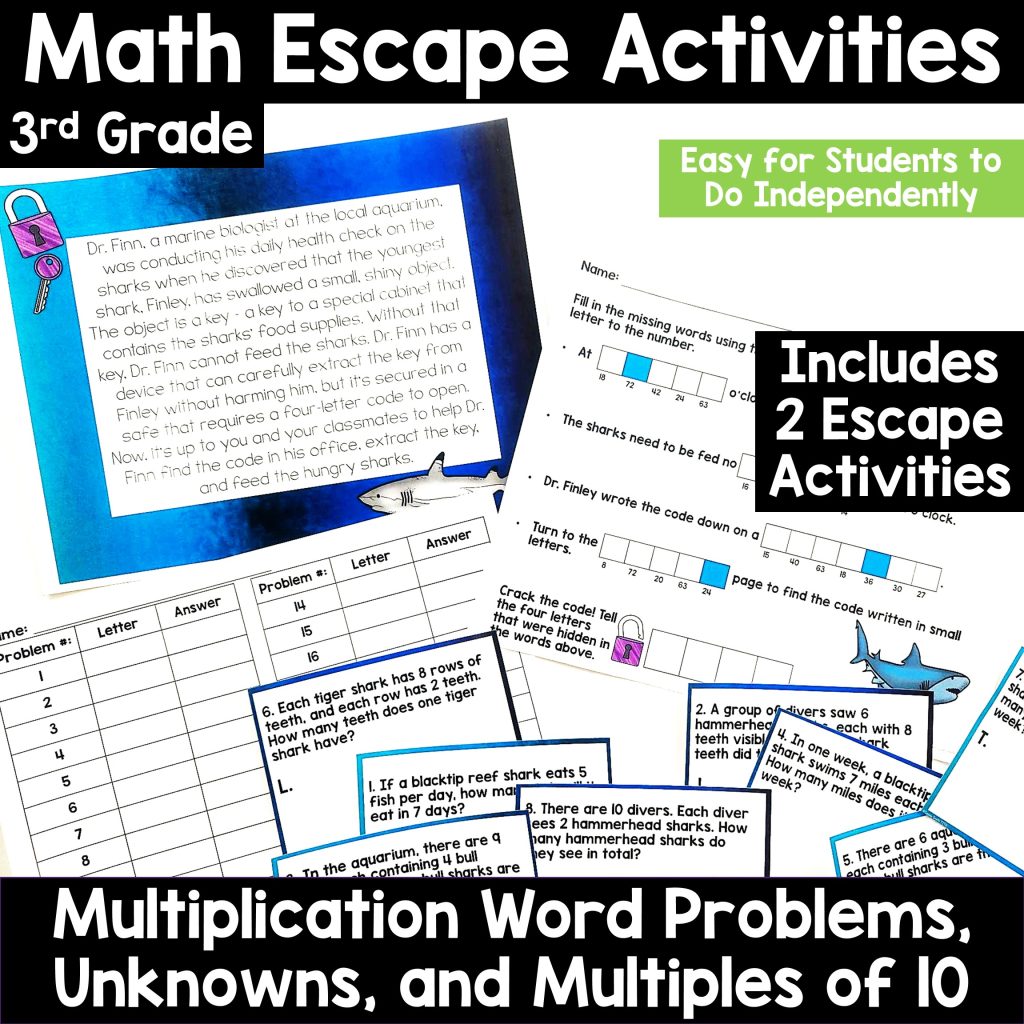
Self-checking mazes are another great way to practice multiplication skills. Wrong answers lead to dead ends so students immediately know if they got the problem right tor wrong!
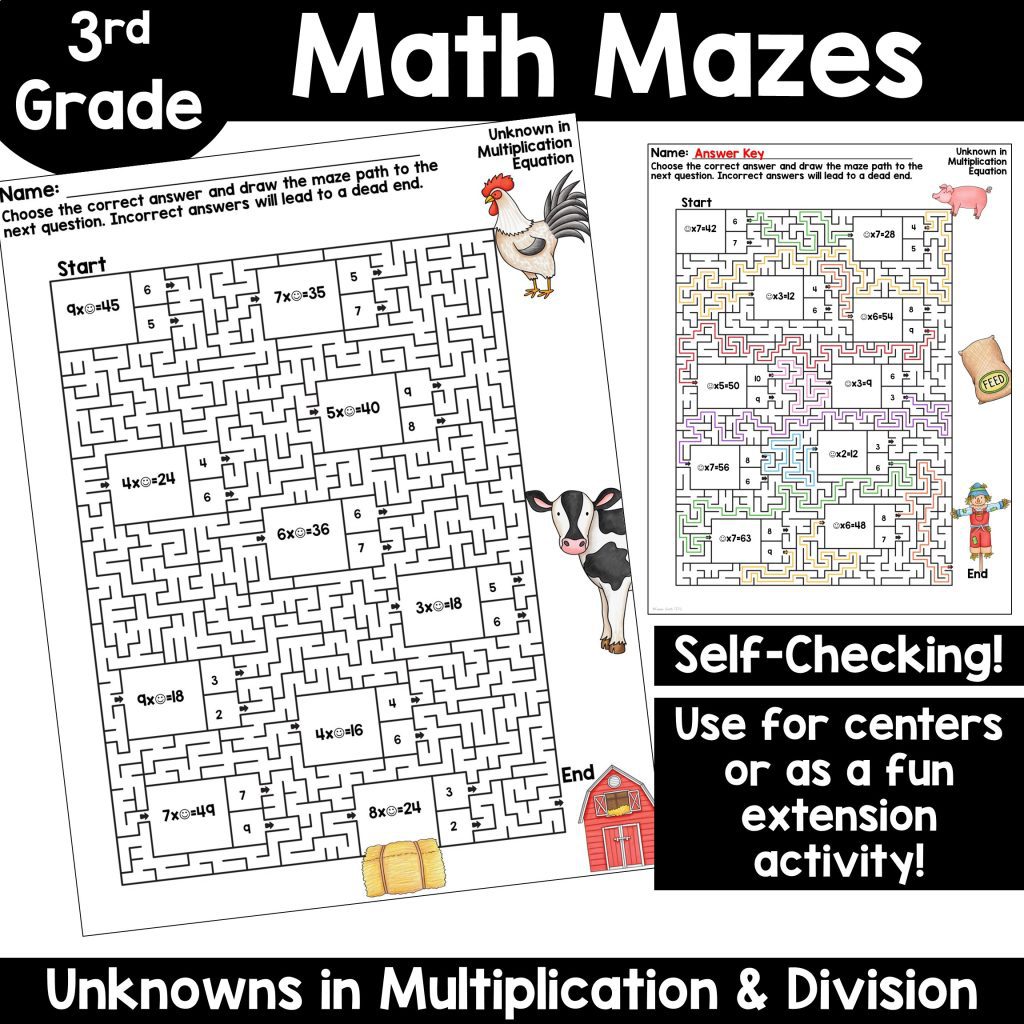
Mystery Number Hunt 🔎
Write multiplication problems with unknowns on index cards, such as 4 x ? = 20. Hide these cards around the classroom. Students search for the cards and solve the problems by finding the mystery number. This can be a timed activity to add excitement.
Equation Balance Game⚖️
Draw a balance scale on the board and write multiplication equations with unknowns on either side, e.g., 3 x ? on one side and 12 on the other side. Students take turns coming up to solve for the unknowns, ensuring both sides of the scale are balanced.
Unknowns Bingo
Create bingo cards with multiplication equations that have unknowns, such as ? x 5 = 25. Call out the complete equations, and students solve for the unknowns and mark their cards. The first student to get a bingo wins.
Multiples of Ten Roll 🎲
Using dice, have students roll a standard die for the single digit and a ten-sided die (labeled 10, 20, 30, etc.) for the multiple of ten. Students then multiply the two numbers together. This game can be played individually or in pairs, and students can record their answers on a sheet.
Ten Times Table Race
Create a race track game board with spaces labeled in increments of ten (10, 20, 30, etc.). Students draw cards with single-digit numbers and multiply them by 10 to move their game piece forward. The first student to reach the end of the track wins.
Multiples of Ten Bingo
Create bingo cards with multiplication problems like 3 x 10, 4 x 20, etc. Call out the products, and students mark their cards accordingly. This game reinforces the concept of multiplying by multiples of ten through repetitive practice.
Games for Practicing Multiplication Fluency
Once your students have learned all of the basics of multiplication, you can spend the remainder of the school year practicing and reinforcing multiplication facts. Here are some fun printable and digital games to do that:
The printable games below are just some of the fun games included in my 3rd Grade Multiplication & Division unit.
Other Free and Easy Classroom Multiplication Games for 3rd Grade
Sometimes you need quick and easy games that require minimal prep. Here are some free and engaging multiplication games you can play in the classroom:
Around the World 🌎
This classic game has students compete to answer multiplication facts quickly. One student stands behind another’s chair, and the teacher calls out a multiplication fact. The first to answer correctly moves on to the next student’s chair, aiming to go “around the world” by answering the most questions correctly. Can one student beat everyone and make it all the way back to their own seat?
Flash Card Race
Divide the class into teams and give each team a set of multiplication flash cards. Teams race to answer all the cards correctly. The first team to finish wins. This game is great for practicing speed and accuracy.
Multiplication War 🃏
Using a deck of cards, have students flip over two cards at a time and multiply the numbers. The student with the highest product wins the round and keeps the cards. The player with the most cards at the end wins the game.
Roll and Multiply 🎲
Students roll two dice and multiply the numbers together. This simple game can be played individually or in pairs and is a great way to practice facts. For accountability, have students record their equations and products on a piece of paper.
By incorporating these engaging multiplication games into your lesson plans, you’ll not only make math fun for your 3rd graders but also help them build solid multiplication skills that will serve as a foundation for future math concepts they will learn in fourth and fifth grades. Happy teaching!
Learn 6 Multiplication Strategies to Teach Your 3rd Graders


